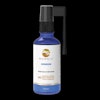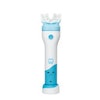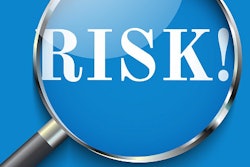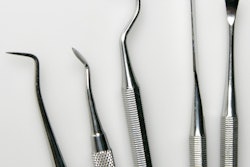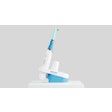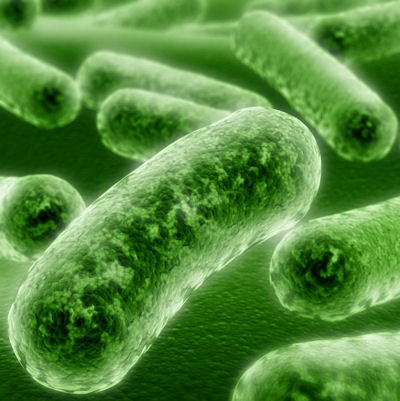
Syringes, scalers, and high-speed handpieces could be spreading harmful microorganisms in your dental practice, according to the findings of a recent systematic review that evaluated where pathogenic bioaerosols come from and what risk they pose to dental staff and patients.
After noticing a dearth of comprehensive reviews on the composition and risks of bioaerosols, a team of researchers from Amsterdam decided to summarize the findings of more than 60 studies on the topic. They published their systematic review in PLOS One (May 22, 2017).
"The risk of acquiring pathogenic agents by bioaerosols may be a hazard to both healthy and immunosuppressed patients as well as [healthcare workers]," wrote the authors, led by Charifa Zemouri, a doctoral candidate at the University of Amsterdam. "Therefore, we chose to perform a scoping review on the present body of evidence regarding bioaerosols. This results in an up-to-date summary of the literature."
Breaking down risk
Bioaerosols are organic liquid or solid particles that can stay suspended in air for hours and contaminate surfaces. Because they can contain pathogens, bioaerosols have the potential to put healthcare staff and their patients at risk for contracting and spreading diseases.
Despite the risk bioaerosols carry, the researchers could find no previous systematic reviews that summarized their role in the spread of infectious diseases. Therefore, they decided to conduct their own review to answer three questions:
- Where do bioaerosols come from?
- What are bioaerosols composed of?
- How hazardous are bioaerosols?
The researchers began their review by searching the scientific literature for studies that evaluated the composition and pathogenicity of bioaerosols. After limiting the findings to studies that were conducted in a healthcare or dental setting, they included 62 studies in the review.
Ultrasonic scalers, high-speed handpieces, air turbines, three-in-one syringes, and air-water syringes all contributed to the creation of bioaerosols in dental settings, they found. Studies conducted in hospital settings showed coughing, sneezing, and air conditioning also contributed to bioaerosol creation.
"Bioaerosols are generated via multiple sources such as different interventions, instruments, and human activity," the authors wrote. "Bioaerosols can have different microbiological profiles depending on the setting and the used methodology."
The review identified nearly 40 types of microorganisms in the dental setting. These included disease-causing microorganisms, such as the herpes simplex virus type 1 (HSV-1) and Legionella pneumophila, which is responsible for Legionnaire's disease.
While L. pneumophila appears more common in hospitals, the authors found at least one reported case in which a patient, who was likely infected at a dental clinic, later went into septic shock and died. In another case, a dental team member became infected with HSV-1, most likely after ultrasonic scaling a patient with an active HSV-1 infection or by rubbing her eyes while working.
"Bioaerosols can be hazardous to both patients and healthcare workers," the authors wrote. "Legionella species were found to be a bioaerosol-dependent hazard to elderly and patients with respiratory complications."
More dental studies needed
One of the biggest drawbacks of their review was the lack of studies conducted in dental environments, according to the authors. For instance, while 31 studies looked at bioaerosols specifically in hospitals, only 16 evaluated the risk in dental settings. In addition, no dental setting studies specifically evaluated the risk of bioaerosol viruses.
Furthermore, many of the included studies did not describe how the experiment was set up, no studies looked for parasites, and few studies provided data on the risk bioaerosols pose to staff and patients. Because of these limitations, the authors noted they could only summarize the findings of the included studies rather than provide strong conclusions about the composition and risk of bioaerosols in healthcare settings.
"The risks for [healthcare workers], especially dentists, working in an environment in which they are continuously exposed to bioaerosols, and to their patients remains unclear and therefore need further research," the authors wrote. "This is needed in order to comprehend the risks of bioaerosols generated in clinical settings to attention to staff and patients to improve awareness, hygienic standards, risks, and prevention methods."

